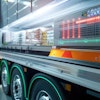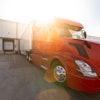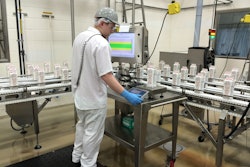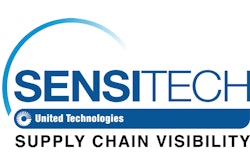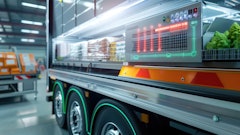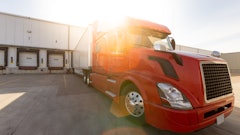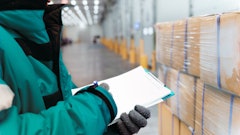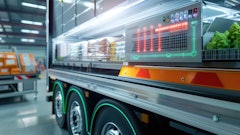
The food supply chain is constantly evolving, but has there ever been a time when it has been more rocked by change? Can visibility and traceability—the bedrock of effective and safe food logistics—keep pace with the breakneck speed with which globalization, e-commerce, technology and simply the way people now buy food are transforming the food supply chain?
Logistics, transportation, and software and technology providers each have their own perspectives, yet one thing they all agree on—the acquisition of Whole Foods by Amazon could be a game changer for food logistics.
The Warehouse
“Amazon’s acquisition of Whole Foods is a big leap in the public’s perception of the integration of e-commerce in the farm to fork of the food supply chain,” comments Ben Medearis, director of business development for Americold.
“Behind the scenes, food and beverage supply chains have been transformed by the IoT (Internet of Things) over recent years. Integrating innovation in a timely fashion, and in a way that continues to promote safety, is an ongoing opportunity for companies like ours,” he says.
In addition, Medearis notes that customer demand for products year-round is increasing demand for a globalized food supply chain, which means increased imports and exports. Even inland facilities are dispatching product via the road and rail to ports and airports, as American food producers send their goods abroad.
Medearis points out that on the front side, when fruit or other perishables come into one of Americold’s facilities, safeguards are in place to ensure product quality, temperature integrity, and federal and state regulatory compliance are adhered to—for example, quality control teams check the temperature and pressure of fruit. Similarly, there are processes in place as those orders of fruit exit the facilities.
“The challenges can arise when the product comes out of the cold storage facility and heads into transit to its final destination if we’re not managing the distribution for our customer,” says Medearis. “The retailer will check the product again upon receipt, but when consumers are buying from an online site—how do you ensure freshness and no contamination on that last leg? I see that as both the next big challenge, as well as the future, for our industry—ensuring the quality and integrity of products purchased online, from end to end, so that the consumer is as content as if they’d personally selected each item.”
When it comes to visibility and traceability, Medearis affirms that there is amazing technology now to track products. “With a click of the mouse or the tap of a smartphone screen on our i-3PL Supply Chain Control portal, you know where your trailer is and that your order is on its way.”
Nevertheless, despite available technology, perceived hazards remain in online food delivery. “If you partner with a large carrier to deliver meal kits, then thousands of these individual meals are going to be delivered to thousands of homes, and each one has to be accounted for and packed in dry ice or some method to ensure the products remain fresh and no one gets sick. It’s our responsibility to provide reassurance to ensure that the customer trusts all will be okay,” adds Medearis.
The Carrier
Realizing there was an opportunity to penetrate the transportation logistics marketplace and create new revenue streams, the Canadian National Railway (CN Rail) purchased 100 53-foot refrigerated cars in 2013, and launched CargoCool. Today, CN operates 720 reefer units across North America, with 21 intermodal terminals, five logistics parks and rail connections to three coasts and six major ports.
“We have the ability to connect each end of the global cold supply chain through transload, rail, and truck, commonly known as intermodal and transmodal, whether import or export, from farm to vessel to port to rail to storage,” explains Kerwin Belle, CN commercial manager. “Today, consumers want access to food products grown around the world, so we enable tangerines from Morocco to travel all the way across the Canadian supply chain without interrupting the cold chain cycle.”
In order to track shipments door to door, CN Rail employs tracking technology that allows a dedicated team of subject matter experts to monitor cargo in transit for up-to-the-minute information and change the set point temperature remotely when required.
“Units are GPS tracked and have telematics installed in them that allow our reefer desk to observe the temperature of the load, fuel levels, ambient temperature and original set point,” notes Belle. “Whether it’s our domestic or international program, our web-based and software programs give us what we believe is the most real-time efficient and accurate feedback, by commodity, on what’s going on inside the box, as well as the ability to capture historical data.”
Belle adds that CN Rail invested a great deal of time in market research to ensure the reefer desk team knew exactly what temperatures were required for specific commodities and how tolerant those commodities were to temperature fluctuations before quality was affected. “The reefer desk team specializes in perishable commodities and focuses all its efforts to ensure product integrity by the time those commodities get to their destination.”
CN Rail is not complacent about the growth CargoCool has enjoyed, which has been somewhat more than anticipated, and is focused on making more capacity available and ensuring equipment is up to industry, Food Safety Modernization Act (FSMA) and Hazard Analysis Critical Control Point (HACCP) standards. “We want to make sure our equipment is always food grade quality to guarantee continued measurement of product that could end up on our own table,” Belle points out.
“Our vision is to continue to grow and develop the industry, to maintain the highest standards in the cold chain and move product safely, on time and damage free to ensure quality both during transit and after delivery,” he concludes.
The Technology
“As consumers, our best experience becomes the standard by which everything else is measured,” says Grant Woolf, vice president of business development and strategy for Sensitech Inc., a global leader in delivering supply chain visibility solutions. “Today’s customers expect that products of all types are tracked in real time. They are accustomed to the visibility provided by the tracking technology available now, and expect deliveries to be on time.”
Trucks and trailers with telematics are able to address on-time delivery challenges, both inbound and outbound. They can provide real-time visibility to shipments in transit, accurately measure logistics performance and drive improvements, according to Woolf. This works particularly well when logistics providers have their own fleet and can track their own shipments.
“But if you’re outsourcing or using a broker, which is often the case today, you may not have the same carrier two days in a row,” he says. “Even if the truck shows up with telematics capability aboard, the logistics team may not be able to integrate the telematics data for that shipment. There is no common cloud system that can connect that truck to you.
“Customers want to track cargo in real time. The good news is that technology is evolving at breakneck speed,” Woolf adds. “As the cost of real-time technology goes down, more customers will track in real time, which will increase logistical efficiencies.”
With globalization, consistency is critical to help ensure continuous supply chain visibility.
“Supply chains that involve multiple third-party transportation vendors, and increasingly cross multiple borders, moving from production to customers, present a real challenge for brand owners. You can only manage it if you can see it, and as product shipments get handed off from one 3PL to another, product owners can’t easily see and manage the process,” says Woolf. “Said differently, shipments rarely stay in the hands of a single vendor as they move around the world. What the brand owner seeks is full visibility across all supply chain partners. Up to this point, it has been a challenge.”
The Sensitech executive adds cellular-based tracking devices (using cell networks) link real-time tracking with real-time temperature monitoring to see things as they happen. “The metrics will tell you that the delivery is going to be late, and the data will tell you which carriers and routes are doing well and which origins or destinations are problematic. Now the customer can sit down with their 3PL and carriers to solve the problems and drive efficiencies.”
Woolf adds: “Everyone wants to track their cargo, the issue is the expense. As both a service company and a manufacturer of tracking devices, our approach is to drive costs down in order to get more shipments tracked. Whoever tracks cargo most efficiently will win the battle.”

